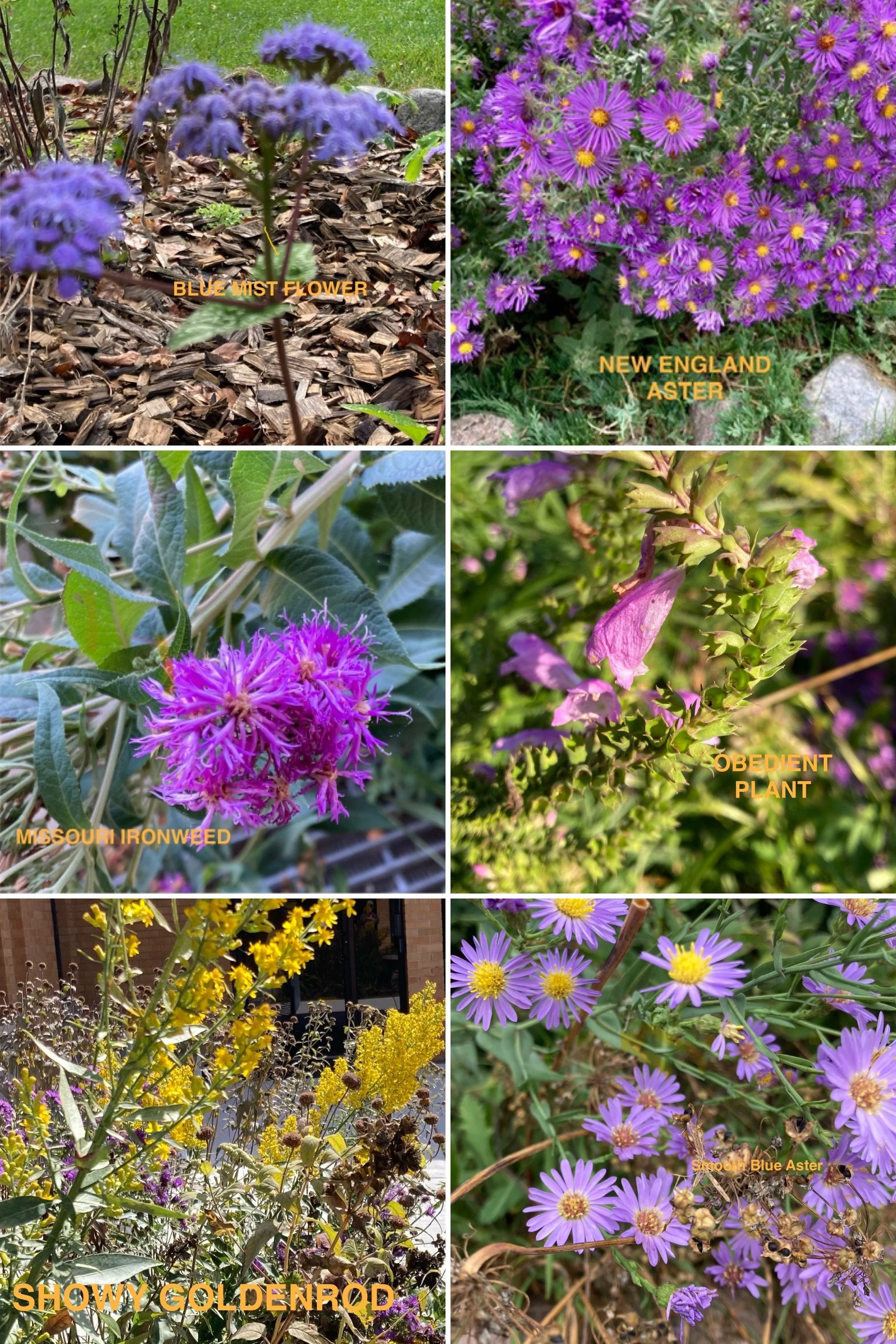The Late Bloomers
Fall Beauty!
It’s early October and summer temperatures continue to linger in the Chicago region. Even though it feels like July or August and I am still wearing shorts and sandals, Autumn officially arrived on the Fall Equinox, September 22, 2025. The waning daylight confirms it is fall even though our temperatures do not. Our nights our now officially longer than our days and this progression into darkness continues until the winter solstice.
Usually cooler temperatures as well as less sunlight triggers my garden to slow down growth and prepare for winter. This year, due to the hot summer like temperatures, I still have pepper plants producing large amounts of fruit. How unusual! The native garden, like the vegetable garden starts to slow its above ground growth by the end of August. The roots of many native species begin storing energy needed to survive the fall and winter so they can return in the Spring. The blooms we enjoyed during the summer are now faded and dried up, but in their place, the late bloomers have arrived and it’s their time for glory, gifting us with vivid colors in the landscape and providing important nutrition for the late season pollinators. The insects rely on these plants and these plants rely on these insects.
The New England asters (Symphyotrichum novae-angliae) and smooth blue asters (Symphyotrichum laeve) in my garden are covered with bees of various sizes and types, as are the showy (Solidago speciosa) and stiff goldenrods (Solidago rigida). Obedient plant (Physostegia virginia) and Joe Pye Weed (Eutrochium purpureum) are also busy providing nectar. Missouri Ironweed (Veronia missurica) had a monarch butterfly visitor on October 1st and the tall boneset (Eupatorium altissimum) and blue mist flower (Conoclium coelstinum) are still blooming and going strong. There are many species of plants in the aster family (Symphyotrichum), and goldenrod family (Solidago), native to the Chicago region, that thrive in sun, part sun, or shade conditions. Other late bloomers are the ironweeds (Veronia), bonesets (Eupatoreum), mist flowers (Conoclium), Joe Pye Weeds (Eutrochium), gentians (Gentiana), some sunflower species (Helianthus), and sneeze weeds (Helenium).
As you start preparing for the next garden season, if you don’t have any of these fall blooming plants, consider adding these reliable late bloomers (they bloom in warm or cool temperatures) to your landscape. I will definitely be adding more of these beautiful nectar rich plants to the garden. The migrating monarch butterflies and pollinators will be happy!


